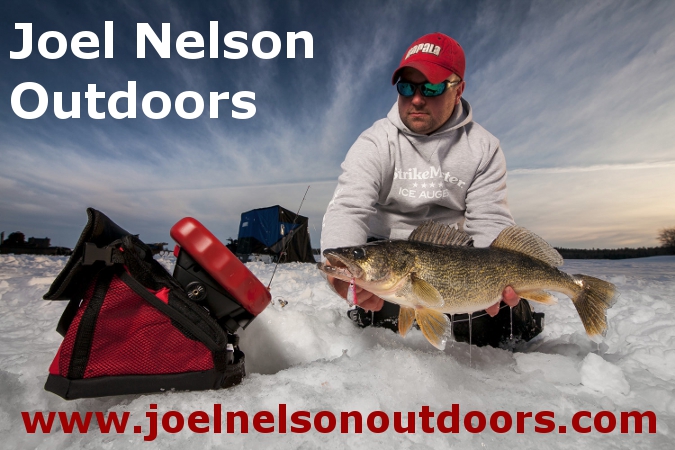Much ink and article space has been given to the idea that mobility leads to more fish. Yet even with lazer-fast augers, lightweight lithium-powered sonar, and warmer, form-fitting outwerwear the likes we’ve never seen before, we so often end up riding out a bite while sitting down, rather than kneeling or standing. Though we may know the more productive play is to troll the open ice, weather among other things can make this difficult. With that in mind, I’ve been told that 80% of our ice fishing brethren chooses shelter of some kind. Increasingly, that’s in the form of a wheelhouse, where mobility is possible yet often impractical. Still, even those in portable shelters avoid moving when at times it would likely be beneficial. The challenge then becomes catching fish in whatever space you choose, knowing you won’t be venturing far from a home base. Here’s a few methods I’ve used to put more fish on the floor when I’m hunkered down.

Location, Location, Location
It’s wise to consider “finding” before fishing. This couldn’t be more true than for a wheelhouse weekend where you know you’ll be stationary for days on end. At the very least, you want to locate yourself along some structural element that should attract fish even if not present at the moment. Preferably, it’s a location that you’ve scouted, or at least drilled and dropped sonar on before committing to. Though you’re likely anxious to drop down and fish, consider that just a few minutes scouting may determine the success of the entire fishing trip.
Portable Strategies
With the advent of hub houses, the fact of the matter is that we’re often using these portable shelters more like permanent ones. Still we know that these can be rather easily moved, so my approach is to put out a modest spread of baits, knowing full well that there’s the opportunity to easily move. Most often, I’ll run one set-line – call it a bobber rod or deadstick – and do my best to run a jigging rod immediately nearby. The setline usually is a plain hook or lightly dressed jig with active live-bait threaded on. The jigging rod is a dinner bell. Hard baits of all varieties work well here, especially loud baits with rattles that push vibrations throughout the water column to as many fish’s lateral lines as possible.
The general idea is to draw fish into your spread so that you can show them your offerings, such that even if they don’t close on the really aggressive baits, they’re directly adjacent to a free-swimming minnow or more neutral enticement. Keep in mind however that with a portable, you still have the option of moving throughout the day. This means that bobber rods or deadsticks are more likely to come into play than tip-ups or rattle reels. I find that keeping everything attached to a rod and reel allows for easier transport.
Permanent and Wheelhouse Approaches
I recoil from the thought that fishing out of a stationary shelter is limiting or otherwise lazy. It certainly can be, but that would be like saying open water trolling is simply dragging crankbaits around until the dumb ones eat. In the boat of a good troller, you might as well be in a science room with a lab-coat. Variables abound, from depth, color, size, shape, bait-length, boat speed, line-distance, line-type, snap selection, location, etc., the opportunities for discovery are endless. Soo too is it for an active wheelhouse or permanent. Consider the house your personal lab, and a chance to really spread your wings and flex some muscles.
Tip-ups here come into play in a very big way, as you’re camping out for awhile or maybe the rest of the winter. You can cover a sizeable distance in any direction, while offering various species at different depths, wholly different looks. Rattle reels inside of the house become a big part of your strategy also in order to take advantage of the total number of lines you’re legally afforded given the number of people in your shelter. On both looks I’m continually experimenting between different forms of live-bait and size, along with hook type (horizontal vs. vertical), line, weight, bobber vs. no-bobber, etc. Like when trolling, let the fish tell you what the magic of the moment is and be ready to adapt immediately.
Of course, ringing the dinner bell is just as important now, similar to the way that a fancy dinner spread is only possible if there are guests at the table. Especially for long wheelhouses or permanent structures, consider people alternating holes, and fishing opposite ends to draw in fish from even greater distance surrounding. I’ve personally seen on underwater camera the same fish identified by unique markings, a split fin, etc., directly seek-out an aggressive offering from either end of a 21-foot shelter. That same fish won’t always commit to the fish-bell, but quite often you look down at the nearby bobber to see it buried beneath the ice.
Stationary doesn’t have to mean sedentary, so keep working out there. Of course, you can take a break and let the fact that just having lines down and fishing is better than sitting on the couch. Especially during prime-times and low-light periods however, lockdown and be ready to tend a variable spread of differing bait options and delivery methods to make the most of your time on the water.

